ART NEWS: March 03
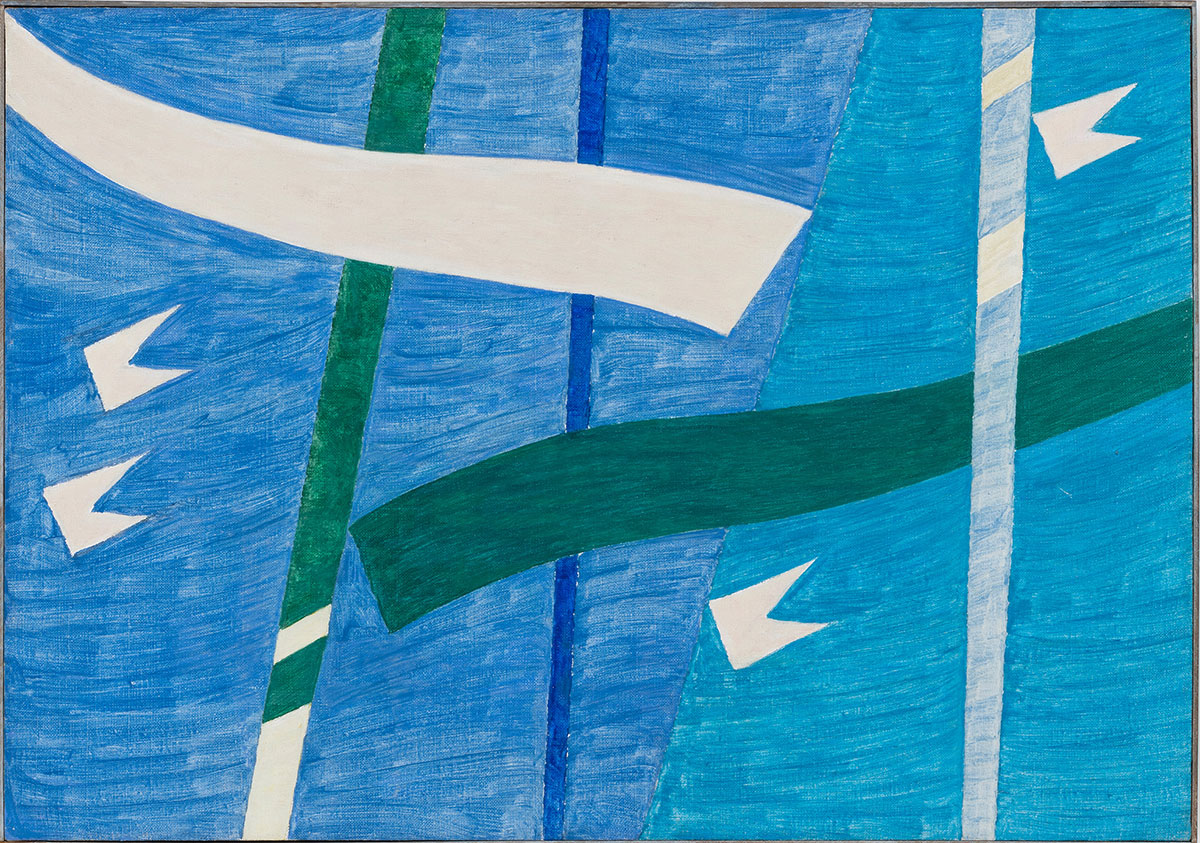 The exhibition “Alvenarias” brings together works by Alfredo Volpi and Fábio Miguez. The show brings together significant works by Volpi, one of the most celebrated Brazilian painters of the 20th century, as well as a series of new and recent paintings and a sculpture by Brazilian contemporary artist Miguez. On view in this exhibition are a series of paintings from Volpi’s most significant series’, which demonstrate his curious eye and perceptive ability to form abstractions through the figurative elements that encompassed his everyday life and art historical studies. Similarly, the works presented by Miguez are carefully considered, with some revisiting paintings by Renaissance masters and others by Volpi himself. Stripping their referents of all extraneous elements and thus presenting often abstract fragments, both artists offer tableaux that examine the spacial elements of the canvas and the illusory qualities of the painterly field. What brings these two artists together is this shared fascination with the worlds they inhabit, from the art historical traditions they have studied, to the overlooked, everyday objects and structures they have encountered while living in their respective environments. Through the modality of painting and artmaking, Volpi and Miguez offer entry points through which the viewer can access the lived experiences of these formidable and curious artists. Info: Gladstone Gallery, 130 East 64th Street, New York, NY, USA, Duration: 11/3-15/4/2023, Days & Hours: Mon-Fri 11:00-18:00, www.gladstone64.com/
The exhibition “Alvenarias” brings together works by Alfredo Volpi and Fábio Miguez. The show brings together significant works by Volpi, one of the most celebrated Brazilian painters of the 20th century, as well as a series of new and recent paintings and a sculpture by Brazilian contemporary artist Miguez. On view in this exhibition are a series of paintings from Volpi’s most significant series’, which demonstrate his curious eye and perceptive ability to form abstractions through the figurative elements that encompassed his everyday life and art historical studies. Similarly, the works presented by Miguez are carefully considered, with some revisiting paintings by Renaissance masters and others by Volpi himself. Stripping their referents of all extraneous elements and thus presenting often abstract fragments, both artists offer tableaux that examine the spacial elements of the canvas and the illusory qualities of the painterly field. What brings these two artists together is this shared fascination with the worlds they inhabit, from the art historical traditions they have studied, to the overlooked, everyday objects and structures they have encountered while living in their respective environments. Through the modality of painting and artmaking, Volpi and Miguez offer entry points through which the viewer can access the lived experiences of these formidable and curious artists. Info: Gladstone Gallery, 130 East 64th Street, New York, NY, USA, Duration: 11/3-15/4/2023, Days & Hours: Mon-Fri 11:00-18:00, www.gladstone64.com/
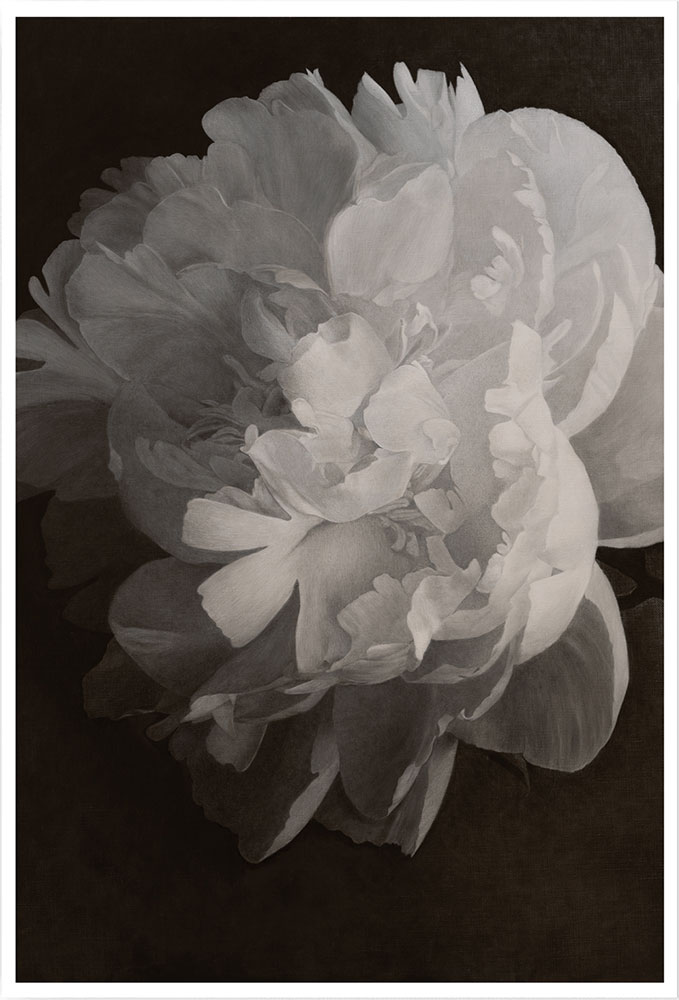 Don Brown paints flowers using only black and white oil pigment. The results are images of great elegance, which direct our attention to the structure of the flowers, their relative neatness or decadence, primness or unselfconsciousness, complexity or simplicity of form. Looking closer we can detect the subtle differences in texture and translucency between leaves, petals, and the treasuries of pollen at the centre: the character of the plant emerges, without the obvious cue of color. This character is deliberately mysterious and puzzling, provocative even. Carefully deployed highlights and a shallow depth of field mean that peripheral parts seem to disappear into the hazy backgrounds, as if into wells of darkness. Reducing images to tonal contrast is not the same as painting in black and white, as you would find, for example in a printed image, like a woodcut. Nor is this monochrome (single colour) painting, but rather as if colour has been introduced as the smallest element, the tiniest homeopathic drop of hue to stimulate our senses. It is in part imaginary: we are so used to seeing the rich colours of flowers that we imagine the petals of the Peony to be pink, or the stems of the flowers to be green. It is also the physical result of using pigment that can be applied thinly, using oil medium, to create different levels of light refraction, creating chromatic tints that are somehow, imperceptibly there. Info: Sadie Coles HQ Gallery, 8 Bury Street, London, United Kingdom, Duration: 16/3-22/4/2023, Days & Hours: Tue-Sat 11:00-18:00, www.sadiecoles.com/
Don Brown paints flowers using only black and white oil pigment. The results are images of great elegance, which direct our attention to the structure of the flowers, their relative neatness or decadence, primness or unselfconsciousness, complexity or simplicity of form. Looking closer we can detect the subtle differences in texture and translucency between leaves, petals, and the treasuries of pollen at the centre: the character of the plant emerges, without the obvious cue of color. This character is deliberately mysterious and puzzling, provocative even. Carefully deployed highlights and a shallow depth of field mean that peripheral parts seem to disappear into the hazy backgrounds, as if into wells of darkness. Reducing images to tonal contrast is not the same as painting in black and white, as you would find, for example in a printed image, like a woodcut. Nor is this monochrome (single colour) painting, but rather as if colour has been introduced as the smallest element, the tiniest homeopathic drop of hue to stimulate our senses. It is in part imaginary: we are so used to seeing the rich colours of flowers that we imagine the petals of the Peony to be pink, or the stems of the flowers to be green. It is also the physical result of using pigment that can be applied thinly, using oil medium, to create different levels of light refraction, creating chromatic tints that are somehow, imperceptibly there. Info: Sadie Coles HQ Gallery, 8 Bury Street, London, United Kingdom, Duration: 16/3-22/4/2023, Days & Hours: Tue-Sat 11:00-18:00, www.sadiecoles.com/
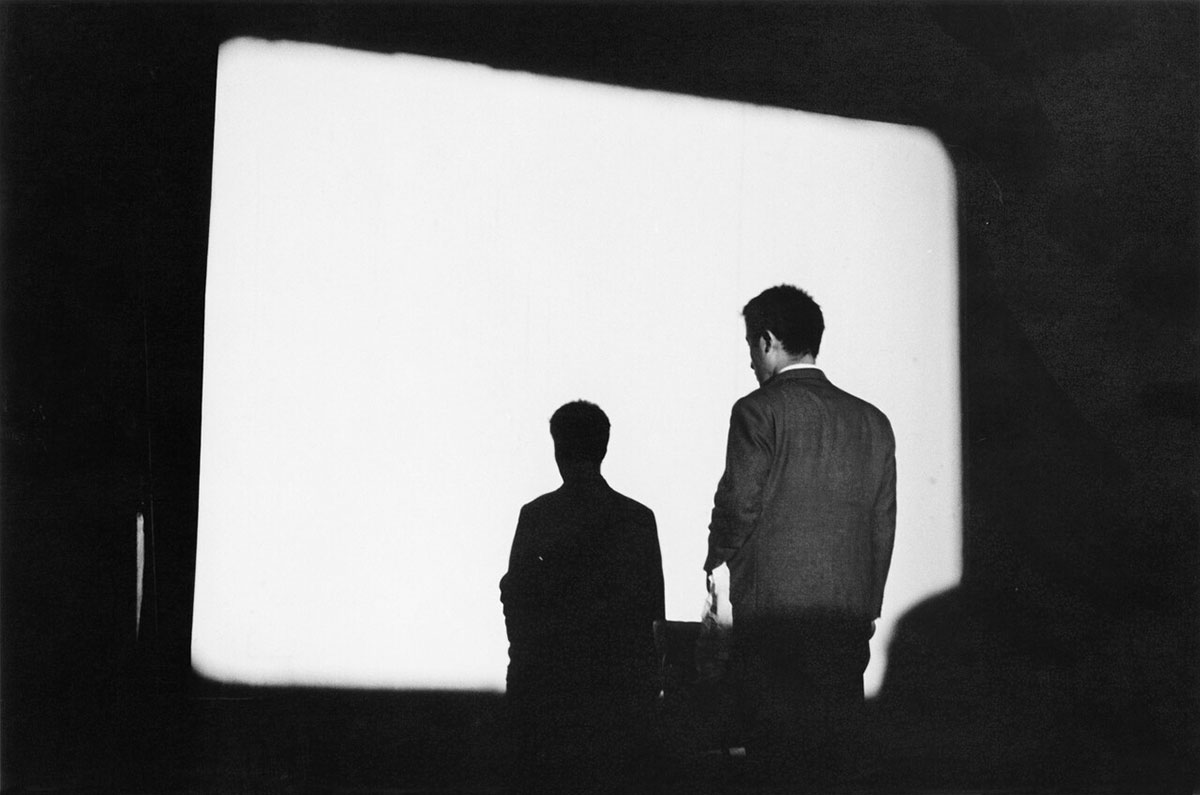 Nam June Paik liked to describe himself as “the world’s most famous bad pianist,” alluding to the musical and performative element in his work. The exhibition “Nam June Paik: I Expose the Music” presents the work of the video art pioneer by focusing on live moments that run like a thread through his artistic career. The exhibition shows approximately 100 works, including installations, sculptures, audio and video works, unusual scores, instructions for action and concepts, as well as photographic documents and posters. They illustrate how the audience directly experienced Paik’s performances and was actively involved, whether in a gallery space or in a live television broadcast. For the first time in Germany, the powerful s partial installation “Sistine Chapel” (1993) is shown, which performs a remix of Paik specific pop/cultural history as an early example of multimedia immersion. Other chapters of the exhibition are devoted to Paik’s collaboration with Charlotte Moorman, his early work with Karlheinz Stockhausen and his hitherto little explored relationship with Dieter Roth. Various interactive works by Paik also involve the audience in this exhibition in which visitors generate electronic sounds or images. Info: Curator: Rudolf Frieling, Museum Ostwall, U-Dortmund, Leonie-Reygers-Terrasse 2, Dortmund, Germany, Duration: 17/3-27/8/2023, Days & Hours: Tue-Wed & Sat-Sun 11:00-18:00, Thu-Fri 11:00-20:00, https://dortmunder-u.de/
Nam June Paik liked to describe himself as “the world’s most famous bad pianist,” alluding to the musical and performative element in his work. The exhibition “Nam June Paik: I Expose the Music” presents the work of the video art pioneer by focusing on live moments that run like a thread through his artistic career. The exhibition shows approximately 100 works, including installations, sculptures, audio and video works, unusual scores, instructions for action and concepts, as well as photographic documents and posters. They illustrate how the audience directly experienced Paik’s performances and was actively involved, whether in a gallery space or in a live television broadcast. For the first time in Germany, the powerful s partial installation “Sistine Chapel” (1993) is shown, which performs a remix of Paik specific pop/cultural history as an early example of multimedia immersion. Other chapters of the exhibition are devoted to Paik’s collaboration with Charlotte Moorman, his early work with Karlheinz Stockhausen and his hitherto little explored relationship with Dieter Roth. Various interactive works by Paik also involve the audience in this exhibition in which visitors generate electronic sounds or images. Info: Curator: Rudolf Frieling, Museum Ostwall, U-Dortmund, Leonie-Reygers-Terrasse 2, Dortmund, Germany, Duration: 17/3-27/8/2023, Days & Hours: Tue-Wed & Sat-Sun 11:00-18:00, Thu-Fri 11:00-20:00, https://dortmunder-u.de/
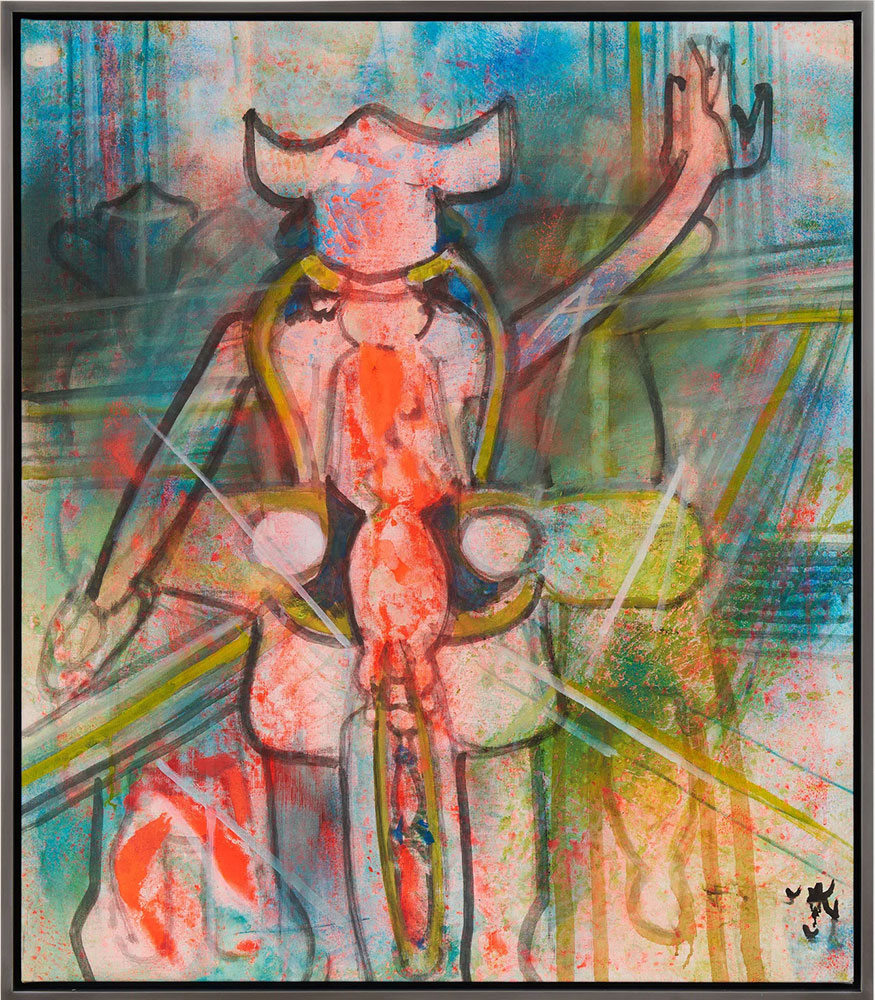 An exhibition presents five paintings created by Roberto Matta between the 1970s and 1990s. Matta’s early interest in giving visual form to what he termed “psychological morphologies” was transformed by World War II, the Cold War, and Augusto Pinochet’s 1973 coup in Chile. Those events and their aftermaths catalyzed Matta to take a more politically minded approach to painting.. The exhibition of mid- and late-career work sheds light on his mature style. Through his unique, imaginative vision, the artist parsed big questions centering on the origins of human consciousness, the arc of human history, and the makeup of vast, unknowable universes beyond the Earth. Often cited as a critical influence on the development of the New York School, Matta combined figuration and abstraction to explore spiritual and fantastical subjects related to human interiority and cosmic landscapes. Info: Pace Gallery, The Royal Poinciana Plaza, 340 Royal Poinciana Way, Suite M333, Palm Beach, FL, USA, Duration: 17/3-30/4/2023, Days & Hours: Mon-Sat 10:00-18:00, Sun 12:00-17:00, www.pacegallery.com/
An exhibition presents five paintings created by Roberto Matta between the 1970s and 1990s. Matta’s early interest in giving visual form to what he termed “psychological morphologies” was transformed by World War II, the Cold War, and Augusto Pinochet’s 1973 coup in Chile. Those events and their aftermaths catalyzed Matta to take a more politically minded approach to painting.. The exhibition of mid- and late-career work sheds light on his mature style. Through his unique, imaginative vision, the artist parsed big questions centering on the origins of human consciousness, the arc of human history, and the makeup of vast, unknowable universes beyond the Earth. Often cited as a critical influence on the development of the New York School, Matta combined figuration and abstraction to explore spiritual and fantastical subjects related to human interiority and cosmic landscapes. Info: Pace Gallery, The Royal Poinciana Plaza, 340 Royal Poinciana Way, Suite M333, Palm Beach, FL, USA, Duration: 17/3-30/4/2023, Days & Hours: Mon-Sat 10:00-18:00, Sun 12:00-17:00, www.pacegallery.com/
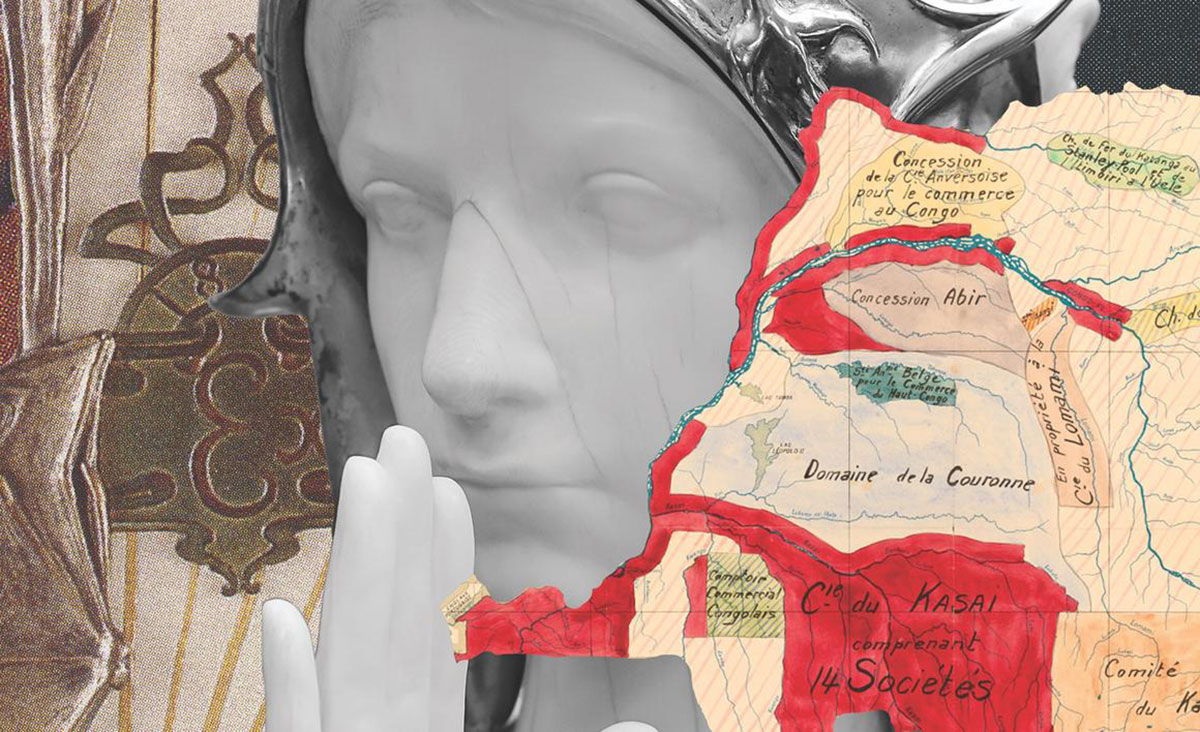 The group exhibition “Style Congo. Heritage & Heresy” explores the politics of cultural representation and appropriation through both contemporary artistic and architectural interventions and historic materials from CIVA’s collection. The exhibition chronicles the representation of Congo in international and colonial expositions held between 1885 and 1958, using Art Nouveau as its anchor point. The Belgian movement, in its time also called Style Congo, coincided with King Leopold II’s exploitation of Congo and reflects a widespread fascination with “exotic” materials and forms. As total artworks, the pavilions of international and colonial exhibitions illustrate the synthesis of the arts to which modernism aspired, not only through architectural form and applied arts, but also by merging the stage and collection, setting a precedent for institutional displays in ethnographic museums. Contemporary artistic and architectural positions in the exhibition question canonical histories and the colonial roots of this heritage, and with it the perception of buildings that became icons of Belgian culture. By examining marks of colonization in the city of Brussels and in the Congolese urban landscape, they propose a decolonial resignification of private and public spaces, seeking to rewrite the margins of history into the center. Info: Curators: Sammy Baloji, Silvia Franceschini, Nikolaus Hirsch, and Estelle Lecaille, CIVA, Rue de l’Ermitage 55 Kluisstraat, Brussels, Belgium, Duration: 17/3-3/9/2023, Days & Hours: Tue-sun 10:30-18:00, www.civa.brussels/
The group exhibition “Style Congo. Heritage & Heresy” explores the politics of cultural representation and appropriation through both contemporary artistic and architectural interventions and historic materials from CIVA’s collection. The exhibition chronicles the representation of Congo in international and colonial expositions held between 1885 and 1958, using Art Nouveau as its anchor point. The Belgian movement, in its time also called Style Congo, coincided with King Leopold II’s exploitation of Congo and reflects a widespread fascination with “exotic” materials and forms. As total artworks, the pavilions of international and colonial exhibitions illustrate the synthesis of the arts to which modernism aspired, not only through architectural form and applied arts, but also by merging the stage and collection, setting a precedent for institutional displays in ethnographic museums. Contemporary artistic and architectural positions in the exhibition question canonical histories and the colonial roots of this heritage, and with it the perception of buildings that became icons of Belgian culture. By examining marks of colonization in the city of Brussels and in the Congolese urban landscape, they propose a decolonial resignification of private and public spaces, seeking to rewrite the margins of history into the center. Info: Curators: Sammy Baloji, Silvia Franceschini, Nikolaus Hirsch, and Estelle Lecaille, CIVA, Rue de l’Ermitage 55 Kluisstraat, Brussels, Belgium, Duration: 17/3-3/9/2023, Days & Hours: Tue-sun 10:30-18:00, www.civa.brussels/
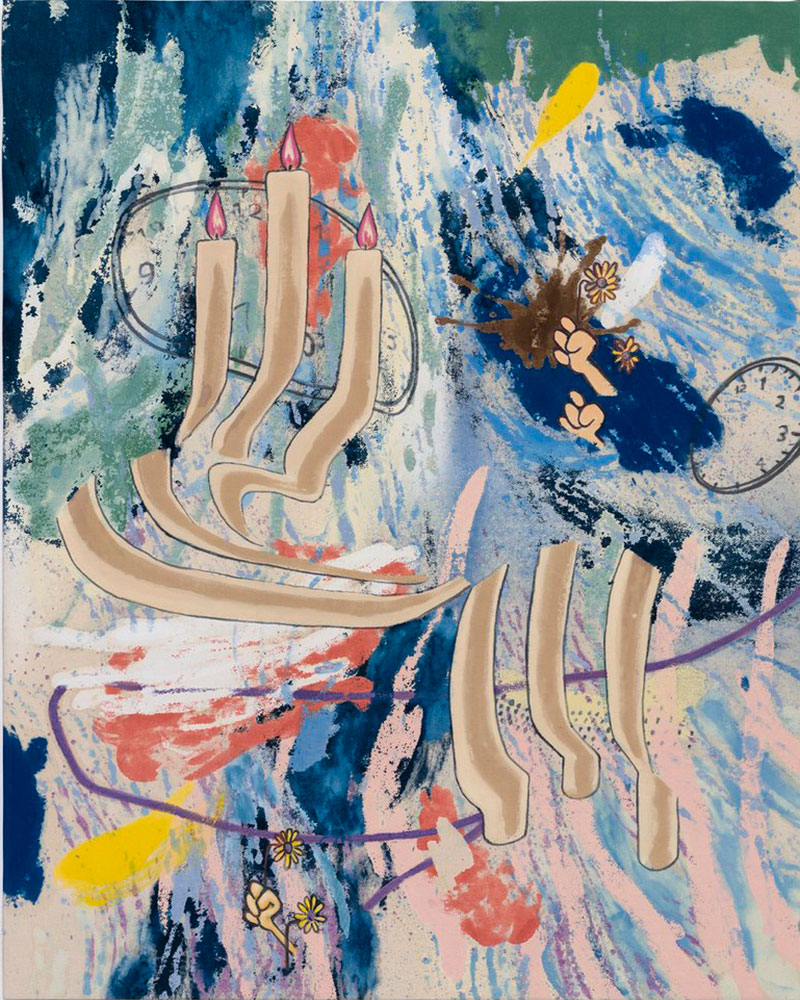 Chris Hood presents new paintings in his exhibition “Thought Forms”. His most recent body of work features pop culture iconography both familiar and banal. Fragmented surrealist clichés of melting clocks and burning candles commingle with cartoonish, disembodied hands and faces. These playful elements drift aimlessly across a vivid, shifting color field, often serially repeating across the composition like a fading echo. Their dynamic background is the bleeding through of paint applied to the reverse side of the canvas, a distinct approach central to the artist’s practice in which the canvas consequently functions as a veil—a thin partition between the conscious and subconscious, the mundane and the uncanny, the immediate and the profound. The title alludes to an influential 1905 book by the same name, in which theosophist Annie Besant describes the visual manifestation of thought itself: “Each definite thought produces a double effect—a radiating vibration and a floating form.” Both elements are present in Hood’s work on opposite sides of the canvas, yet the artist is less concerned with meta-physical than the physical properties of painting itself. Hood’s application of resin-based paint from behind yields results akin to the soak-stain paintings of the 20th-century; his compositions feature extremely thin layers of pigment that saturate the weft of the canvas. In contrast to other stain painters, thanks to the resistant properties of resin, Hood’s colors do not blend, but rather bloom autonomously alongside and within one another. Info: Praz-Delavallade, 5 rue des Haudriettes, Paris,France, Duration: 18/3-22/4/2023, Days & Hours: Tue-Sat 10:00-18:00, www.praz-delavallade.com/
Chris Hood presents new paintings in his exhibition “Thought Forms”. His most recent body of work features pop culture iconography both familiar and banal. Fragmented surrealist clichés of melting clocks and burning candles commingle with cartoonish, disembodied hands and faces. These playful elements drift aimlessly across a vivid, shifting color field, often serially repeating across the composition like a fading echo. Their dynamic background is the bleeding through of paint applied to the reverse side of the canvas, a distinct approach central to the artist’s practice in which the canvas consequently functions as a veil—a thin partition between the conscious and subconscious, the mundane and the uncanny, the immediate and the profound. The title alludes to an influential 1905 book by the same name, in which theosophist Annie Besant describes the visual manifestation of thought itself: “Each definite thought produces a double effect—a radiating vibration and a floating form.” Both elements are present in Hood’s work on opposite sides of the canvas, yet the artist is less concerned with meta-physical than the physical properties of painting itself. Hood’s application of resin-based paint from behind yields results akin to the soak-stain paintings of the 20th-century; his compositions feature extremely thin layers of pigment that saturate the weft of the canvas. In contrast to other stain painters, thanks to the resistant properties of resin, Hood’s colors do not blend, but rather bloom autonomously alongside and within one another. Info: Praz-Delavallade, 5 rue des Haudriettes, Paris,France, Duration: 18/3-22/4/2023, Days & Hours: Tue-Sat 10:00-18:00, www.praz-delavallade.com/
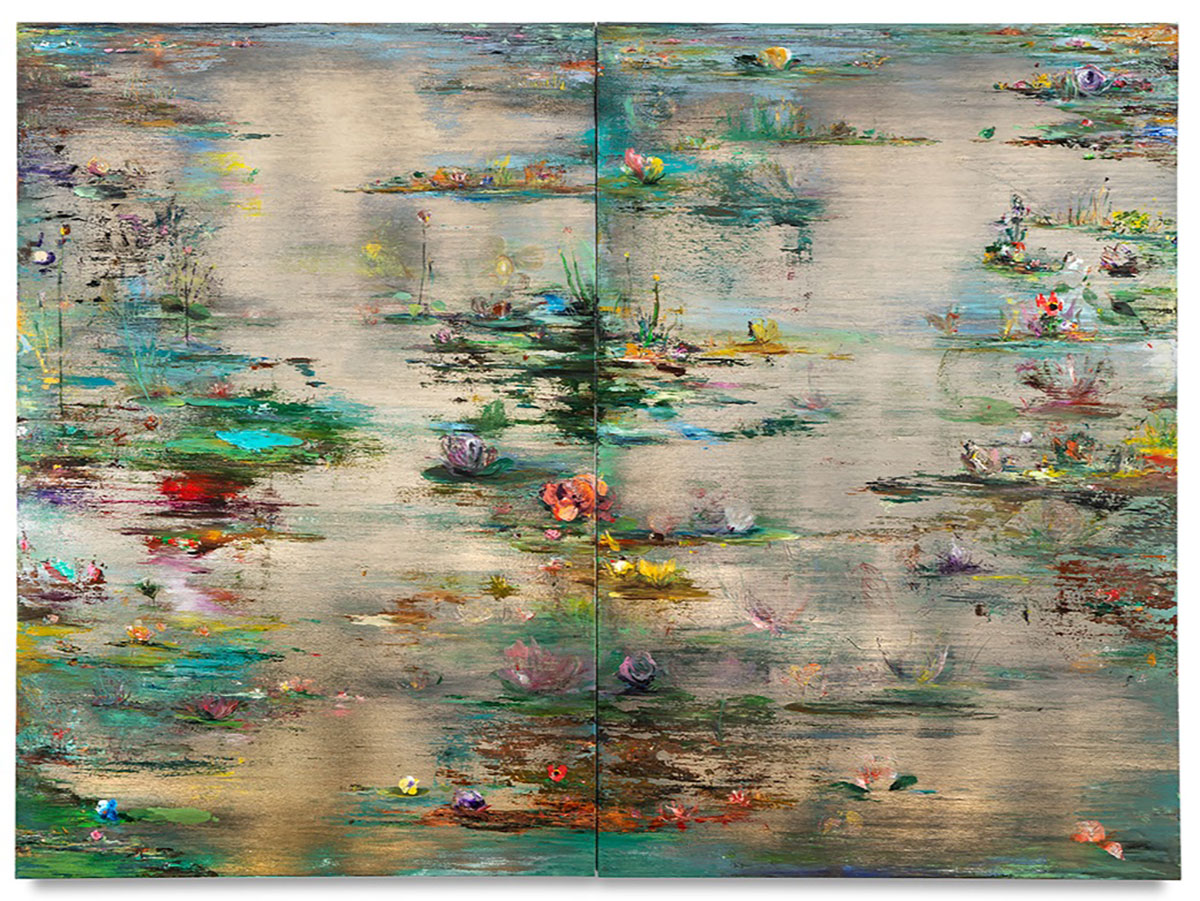 In the exhibition “100 Years Is Not Enough”, Nir Hod’s artistic practice draws upon personal memory and traumatic historical events to elicit subtle tensions between the viewer’s expectations and the material reality of the painting surface. The title of the exhibition is taken from Hod’s naturalistic group of floral landscapes which employ similar elements from his distinct chromed, abstract canvases. These new works present a masterful play between the profoundly illusionistic depth of the chromed, mirror-like surface that reflects the viewer and their surroundings, and the physical substance of the painting evidenced by the oil painted brushstrokes surrounding the chrome. The effect has an extraordinary impact precisely because of the two competing, yet completely compatible, major shifts in painterly perspective. Hod applies a labor-intensive chrome technique over washes of oil gradient underpainting. The canvases are then carefully, sometimes brutally, manipulated by the application of ammonia, acids, air pressure, and soft brushes to remove sections of the chrome to expose the underpainting. In these new paintings, the artist has transformed his reflective canvases and by extension the viewer who—at the very moment of observation becomes integral to the subject matter—into highly aestheticized bodies. The finished paintings, with their vacillating pictorial depths of field, act as palimpsestic archives of beauty amid destruction. Info: Kohn Gallery, 1227 North Highland Ave., Los Angeles, CA, USA, Duration: 18/3-29/4/2023, Days & Hours: Tue-Fri 10:00-18:00, Sat 11:00-18:00, www.kohngallery.com/
In the exhibition “100 Years Is Not Enough”, Nir Hod’s artistic practice draws upon personal memory and traumatic historical events to elicit subtle tensions between the viewer’s expectations and the material reality of the painting surface. The title of the exhibition is taken from Hod’s naturalistic group of floral landscapes which employ similar elements from his distinct chromed, abstract canvases. These new works present a masterful play between the profoundly illusionistic depth of the chromed, mirror-like surface that reflects the viewer and their surroundings, and the physical substance of the painting evidenced by the oil painted brushstrokes surrounding the chrome. The effect has an extraordinary impact precisely because of the two competing, yet completely compatible, major shifts in painterly perspective. Hod applies a labor-intensive chrome technique over washes of oil gradient underpainting. The canvases are then carefully, sometimes brutally, manipulated by the application of ammonia, acids, air pressure, and soft brushes to remove sections of the chrome to expose the underpainting. In these new paintings, the artist has transformed his reflective canvases and by extension the viewer who—at the very moment of observation becomes integral to the subject matter—into highly aestheticized bodies. The finished paintings, with their vacillating pictorial depths of field, act as palimpsestic archives of beauty amid destruction. Info: Kohn Gallery, 1227 North Highland Ave., Los Angeles, CA, USA, Duration: 18/3-29/4/2023, Days & Hours: Tue-Fri 10:00-18:00, Sat 11:00-18:00, www.kohngallery.com/
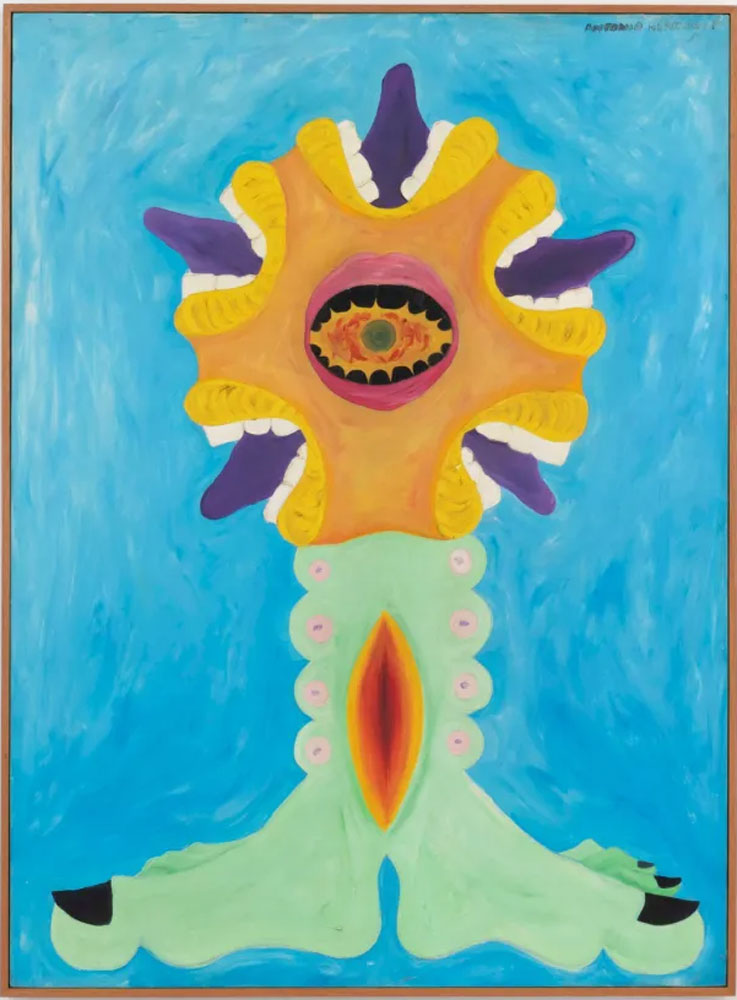 The group exhibition “and we learn to keep the soil wet” gathers the practices of nine artists engaged with an ethics of intimacy and reciprocity. These artists experiment with visual and sonic vocabularies that consider nature, the body, and technology, not as divided territories, but as products of solidarities and conciliations. The works in this show reflect on the importance of relational thinking and sensing beyond the human, recuperating and nurturing links between people and other forms of life. Developing these expansive connections is a process of collective world-making rooted in care. The soil and the corporeal, for instance, manifest these forms of interdependence. They carry histories of violence while nourishing cycles of growth and decay that act as catalysts for transforming social and racialized relationships. From varying perspectives, Antonio Henrique Amaral, Ane Graff, Timothy Yanick Hunter, Kite, Ana Maria Millan, Ebony G. Patterson, Khari Johnson Ricks, Suellen Rocca, and Zheng Bo defy their given or imposed territories through works that have grown out of emotional architectures, like the space of dreams, the resilience of forests, the memories of the flesh, and the connections between the gut and the brain. Info: Center for Art, Research and Alliances (CARA), 225 West 13th Street, 10011 New York, NY, USA, Duration 18/3-2/7/2023, Days & Hours: Wed-Thu & Sat 11:00-18:00, Fri 11:00-20:00, Sun 12:00-17:00, www.cara-nyc.org/
The group exhibition “and we learn to keep the soil wet” gathers the practices of nine artists engaged with an ethics of intimacy and reciprocity. These artists experiment with visual and sonic vocabularies that consider nature, the body, and technology, not as divided territories, but as products of solidarities and conciliations. The works in this show reflect on the importance of relational thinking and sensing beyond the human, recuperating and nurturing links between people and other forms of life. Developing these expansive connections is a process of collective world-making rooted in care. The soil and the corporeal, for instance, manifest these forms of interdependence. They carry histories of violence while nourishing cycles of growth and decay that act as catalysts for transforming social and racialized relationships. From varying perspectives, Antonio Henrique Amaral, Ane Graff, Timothy Yanick Hunter, Kite, Ana Maria Millan, Ebony G. Patterson, Khari Johnson Ricks, Suellen Rocca, and Zheng Bo defy their given or imposed territories through works that have grown out of emotional architectures, like the space of dreams, the resilience of forests, the memories of the flesh, and the connections between the gut and the brain. Info: Center for Art, Research and Alliances (CARA), 225 West 13th Street, 10011 New York, NY, USA, Duration 18/3-2/7/2023, Days & Hours: Wed-Thu & Sat 11:00-18:00, Fri 11:00-20:00, Sun 12:00-17:00, www.cara-nyc.org/
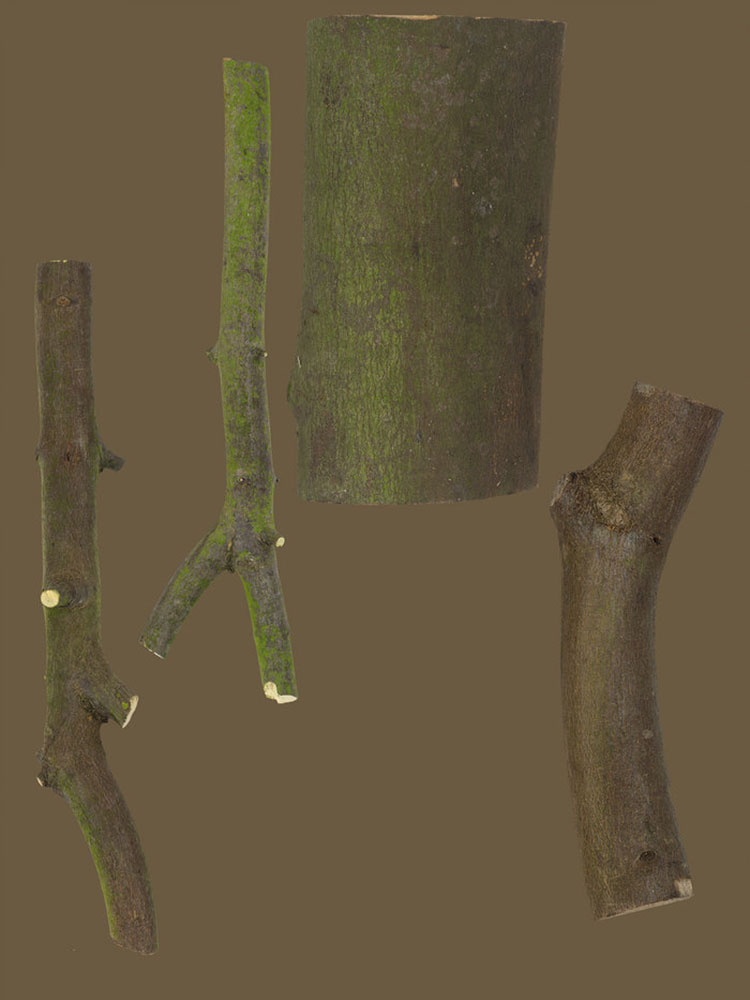 “Limbo” entitles a new room-filling installation by Stefaan Dheedene. Limbo can refer to a dance or game where participants try to pass under a horizontal bar without touching it. The bar is gradually lowered after each round, making it increasingly difficult to pass under without falling or touching the bar. This exhibition further testifys to a shift within the artist’s attention: from objects, installations and video works with modernist, conceptual overtones to a more concrete ‘ontology’ of objects and instruments relating to the active body. And paradoxically, biographical, anecdotal footnotes – on Africa, the sea, rhythm, family, engagement, and disappearance – work their way up. Dheedene’s works are not material ideals as such, but rather the expression of an end. The search-modus is abolished. What is found here was not to be searched for, is not an invention nor a discovery, but a finding, re-organized and displayed. This exhibition is (like most exhibitions) about waiting, waiting for something that could never happen. It’s keeping things in a state we might call desire, simply keeping it there, that yearning, that uncertainty, keeping things poised in just that place. Info: Annie Gentils Gallery, Peter Benoitstraat 40, Antwerp, Belgium, Duration: 19/3-7/5/2023, Days & Hours: Wed-Sat 14:00-18:00, www.anniegentilsgallery.com/
“Limbo” entitles a new room-filling installation by Stefaan Dheedene. Limbo can refer to a dance or game where participants try to pass under a horizontal bar without touching it. The bar is gradually lowered after each round, making it increasingly difficult to pass under without falling or touching the bar. This exhibition further testifys to a shift within the artist’s attention: from objects, installations and video works with modernist, conceptual overtones to a more concrete ‘ontology’ of objects and instruments relating to the active body. And paradoxically, biographical, anecdotal footnotes – on Africa, the sea, rhythm, family, engagement, and disappearance – work their way up. Dheedene’s works are not material ideals as such, but rather the expression of an end. The search-modus is abolished. What is found here was not to be searched for, is not an invention nor a discovery, but a finding, re-organized and displayed. This exhibition is (like most exhibitions) about waiting, waiting for something that could never happen. It’s keeping things in a state we might call desire, simply keeping it there, that yearning, that uncertainty, keeping things poised in just that place. Info: Annie Gentils Gallery, Peter Benoitstraat 40, Antwerp, Belgium, Duration: 19/3-7/5/2023, Days & Hours: Wed-Sat 14:00-18:00, www.anniegentilsgallery.com/
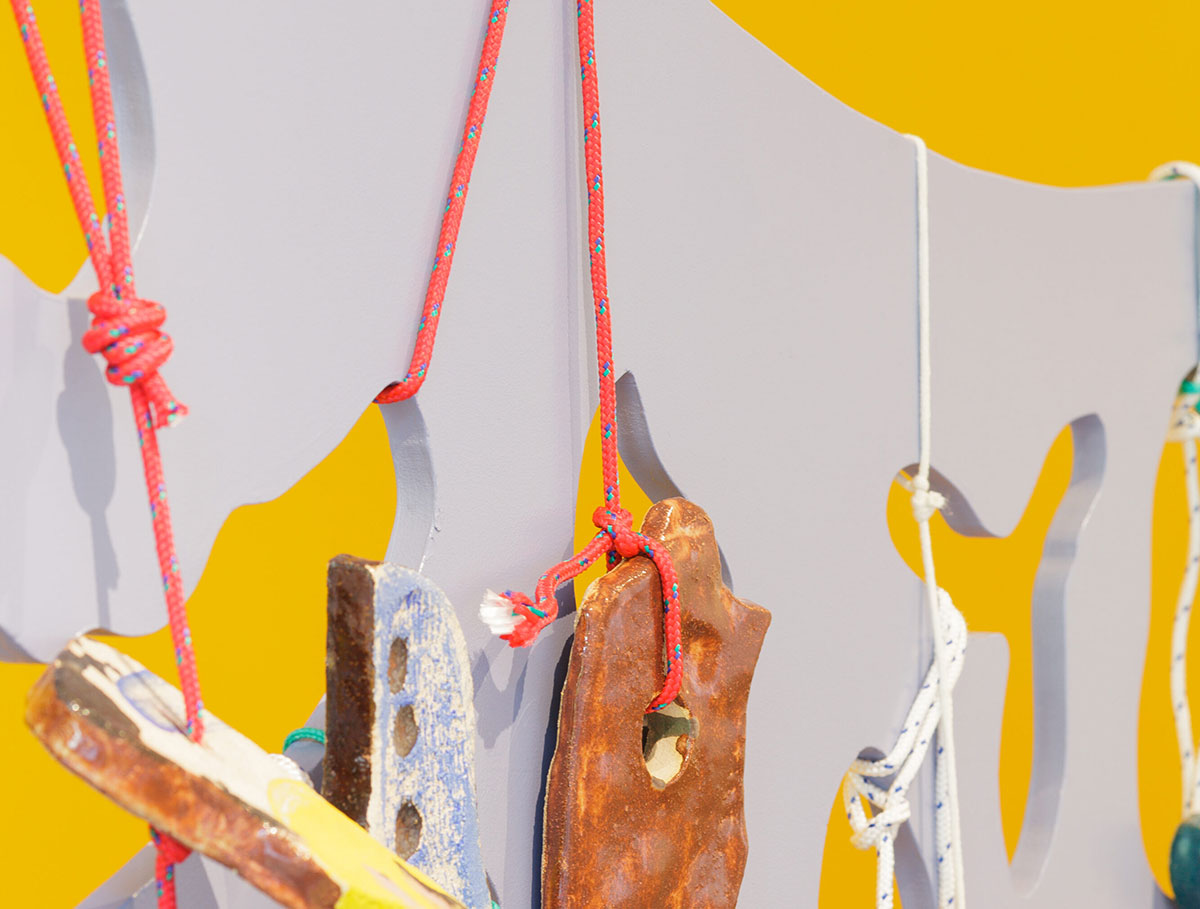 “Casa Encontrada”, is a project specifically designed for the gallery space, it recalls the finding of the ruins of an abandoned building. Sol Calero invites us into a place of vibrant colors and leads us to search and discover this house. The gallery space is completely transformed. The artist leads us into this new rediscovered space, offering us the possibility of observing a known place with other eyes, open to a critical re-reading. Sol Calero creates site-specific installations that work as spaces for gathering. She often uses opulent three-dimensional tableaus and has staged situations as far ranging as a school to a spa and a currency exchange office. Calero’s works are at once vibrant, bright, and playful, while also examining the political overtones of themes such as cultural representation, national identity, exoticism, and marginalization. Her Venezuelan background has influenced an interest in looking at cultural codes or clichés from the Latin American context that proliferate and change, as well as the way in which visual symbols can undergo transformation. Info: Francesca Minini, Via Massimiano, 25, Milan, Italy, Duration: 21/3-7/5/2023, Days & Hours: Tue-Sat 11:00-19:00, www.francescaminini.it/
“Casa Encontrada”, is a project specifically designed for the gallery space, it recalls the finding of the ruins of an abandoned building. Sol Calero invites us into a place of vibrant colors and leads us to search and discover this house. The gallery space is completely transformed. The artist leads us into this new rediscovered space, offering us the possibility of observing a known place with other eyes, open to a critical re-reading. Sol Calero creates site-specific installations that work as spaces for gathering. She often uses opulent three-dimensional tableaus and has staged situations as far ranging as a school to a spa and a currency exchange office. Calero’s works are at once vibrant, bright, and playful, while also examining the political overtones of themes such as cultural representation, national identity, exoticism, and marginalization. Her Venezuelan background has influenced an interest in looking at cultural codes or clichés from the Latin American context that proliferate and change, as well as the way in which visual symbols can undergo transformation. Info: Francesca Minini, Via Massimiano, 25, Milan, Italy, Duration: 21/3-7/5/2023, Days & Hours: Tue-Sat 11:00-19:00, www.francescaminini.it/
